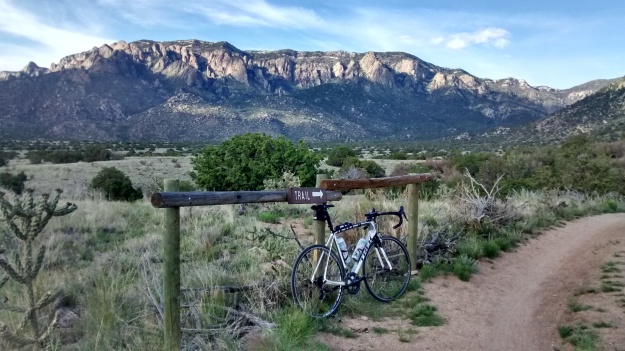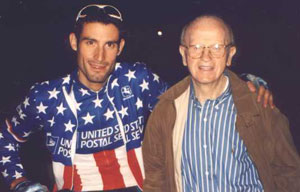Yesterday, Chris Froome won the Tour de France two years after he won it for the first time. He deserves
all of the accolades he receives. Anyone
who can finish the Tour is at least a world-class rider; anyone who can win it
is among the sport’s greats. And when a
cyclist wins the Tour more than once, it’s hard not to compare him with the
sport’s immortals.
He is 30 years old. When Bradley Wiggins won three years ago, he was 32. And, even though Lance Armstrong’s wins have been vacated, I will include him in this comparison: He was a few weeks short of 28 when he wore the maillot jaune in Paris for the first time.
Now, every woman of a certain age has said, “Age is just a number!” (I’m guilty as charged!) In some contexts, it’s true. However, the age at which a cyclist wins his first Tour—or, for that matter, at which he or she achieves his or her first victories or high placements—seems to have a lot to do with whether said cyclists becomes one of the dominant riders of an era—or of the history of the sport.
To be fair, cyclists today can’t be blamed for starting later than their counterparts in earlier generations. When Anquetil and even Hinault were competing, it wasn’t unusual for a young man to leave school at 14 or 16, depending on which country he called home, and start working. Part of the reason was that jobs and apprenticeships were available; another reason was that those young men were working to help support their families, whether in a factory or on the farm.
He is 30 years old. When Bradley Wiggins won three years ago, he was 32. And, even though Lance Armstrong’s wins have been vacated, I will include him in this comparison: He was a few weeks short of 28 when he wore the maillot jaune in Paris for the first time.
Now, every woman of a certain age has said, “Age is just a number!” (I’m guilty as charged!) In some contexts, it’s true. However, the age at which a cyclist wins his first Tour—or, for that matter, at which he or she achieves his or her first victories or high placements—seems to have a lot to do with whether said cyclists becomes one of the dominant riders of an era—or of the history of the sport.
I couldn’t help but to notice that Bernard Hinault
was 23 when he won his first Tour in 1978.
Eddy Mercx’s first victory in the race came at age 24 in 1969. Other cyclists won major stage races and
classics when they were in their early 20’s, and were winning (or at least
finishing among the top riders) in professional and amateur races before that.
| Eddy Mercx in 1969 |
Actually, riders like Mercx, Hinault, Coppi and
other greats from the past were competing in lots of races at such early
ages. (As great as they were, they won
about one out of every five races they entered during their careers.) That gave them the opportunity to learn how
to ride a variety of different races.
When they won, it helped them to build their reputations, which would
lead to contracts with major teams that had the resources to help them elevate
their riding.
By the time Coppi, Jacques Anquetil Mercx and
Hinault won their first major races, they had already entered more races than
most, if not any, of today’s riders will participate in during their entire
careers. And, as I’ve said in my earlier
post, in riding (and sometimes winning) a variety of races, they developed a
range of skills—mental as well as physical—on which they could draw throughout
their careers. As a writer, I liken them
to a writer who reads and writes in a variety of different genres when he or
she is young and develops a diverse repertoire before entering the apex of his
or her career.
| Bernard Hinault in 1978 |
To be fair, cyclists today can’t be blamed for starting later than their counterparts in earlier generations. When Anquetil and even Hinault were competing, it wasn’t unusual for a young man to leave school at 14 or 16, depending on which country he called home, and start working. Part of the reason was that jobs and apprenticeships were available; another reason was that those young men were working to help support their families, whether in a factory or on the farm.
Cyclists of the past usually came from the class
of young men I’ve just described: one
that is disappearing. Young people in western
European countries, like their counterparts in North America and Asia, are
staying in school longer. Given that few
colleges and universities have cycling programs, many would-be racers find it
difficult to keep up their training—especially in the absence of support from a
team or club—at the same time they’re studying.
That means that cyclists aren’t starting or
resuming their careers until they’re just about the age at which Hinault and
Mercx won the Tour for the first time.
They therefore have fewer years in which to compete, let alone amass
victories, never mind to test their mettle in a variety of different kinds of
races. Mercx retired from the sport at
33, which is actually fairly late for an elite cyclists. At that time, he’d been racing professionally
for 17 years: more than half of his life.
(In contrast, Froome didn't turn professional until he was 22.)Few, if any, of today’s cyclists will have such long careers—and thus
less of an opportunity to become the dominant rider Mercx was.



















